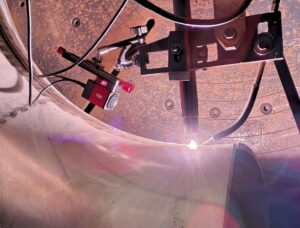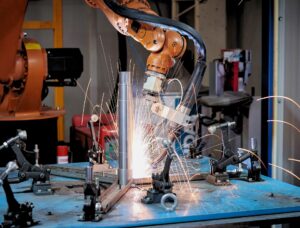Different Types of Welding Processes Explained: MIG, TIG, Stick, and more. Learn the advantages, applications, and how Mecaweld Welding Camera ensures welding quality.
Welding is the backbone of modern fabrication, connecting metals across industries from automotive to aerospace. To master the craft, it’s essential to understand the main welding techniques—their benefits, limitations, and applications. With the help of advanced inspection tools like the Mecaweld Welding Camera, welders and engineers can monitor and refine these processes, ensuring superior welding quality and reducing common weld problems.
MIG Welding (Metal Inert Gas) / MAG Welding
Process: Uses a continuous wire feed with shielding gas.
Advantages: Fast, versatile, and easy to learn.
Applications: Automotive fabrication, construction, general manufacturing.
Common Issues: Porosity, spatter, and improper penetration.
How Mecaweld Helps: Real-time monitoring of the MIG and MAG welding process with the Mecaweld Weld Monitoring Camera improves parameter control and reduces defects.
TIG Welding (Tungsten Inert Gas)
Process: Uses a tungsten electrode and shielding gas for precise control.
Advantages: Clean, high-quality welds with excellent finish.
Applications: Aerospace, stainless steel, aluminum welding.
Common Issues: Lack of fusion, tungsten contamination.
How Mecaweld Helps: The Mecaweld Welding Camera provides clear arc welding images of the TIG arc, helping operators fine-tune technique and improve weld precision.
Stick Welding (Shielded Metal Arc Welding)
Process: Uses flux-coated electrodes that create shielding gas when burned.
Advantages: Works well outdoors and on rusty or dirty metals.
Applications: Construction, pipelines, repair work.
Common Issues: Slag inclusion, porosity, and spatter.
How Mecaweld Helps: High-speed footage from Mecaweld’s camera for welding reveals improper electrode angles and slag formation for better welding inspection.
Plasma Arc Welding
Process: Similar to TIG but uses a constricted arc for higher precision.
Advantages: Deep penetration, great for thin metals.
Applications: Aerospace and electronics.
Common Issues: Excessive heat input leading to distortion.
How Mecaweld Helps: Advanced weld inspection techniques with Mecaweld’s monitoring system allow controlled heat input and process optimization.
Other Welding Processes
- Laser Welding: High-speed, precise, used in automotive and electronics.
- Submerged Arc Welding (SAW): High-deposition, efficient for heavy fabrication.
- Robotic Welding: Automates MIG, TIG, and laser processes for maximum productivity.
Across all these processes, Mecaweld Welding Camera Manufacturer solutions provide operators with enhanced welding visual inspection, ensuring consistency in both manual and robotic welding applications.
Why Use Welding Cameras Across Processes?
- Detect weld defects early, such as cracks and slag inclusion.
- Improve welding quality with real-time analysis and playback.
- Enhance operator training by showing clear arc welding images.
- Provide documentation and traceability for high-standard industries.
Conclusion: Different Types of Welding Processes Explained
Welding cameras have made it possible to see the weld as it happens—and to preserve those visuals for later inspection. By understanding the strengths of both real-time and recorded footage, welding teams can build more robust quality assurance systems, catch problems faster, and reduce the risk of undetected weld failures.
Need a Camera System That Does Both?
Our welding cameras are designed for real-time monitoring with built-in recording capabilities—ideal for projects that demand both speed and accountability. Contact us to learn more or request a demo.



